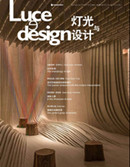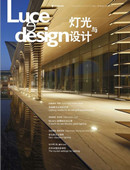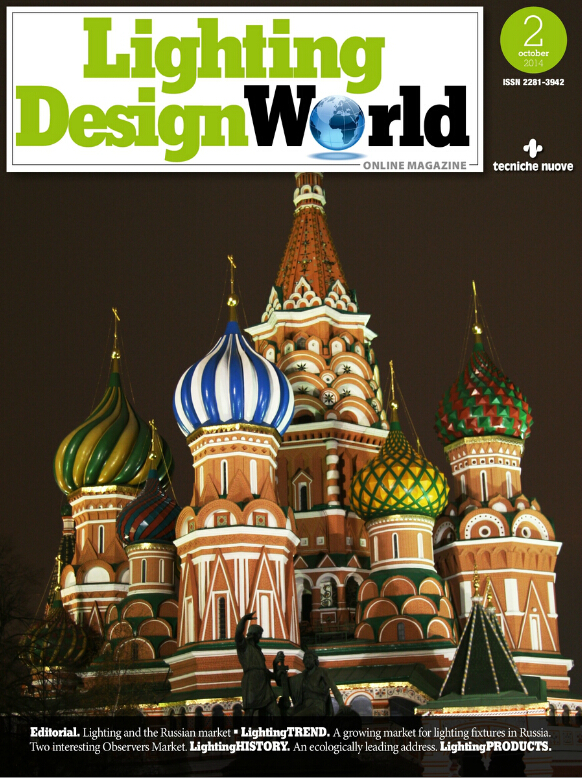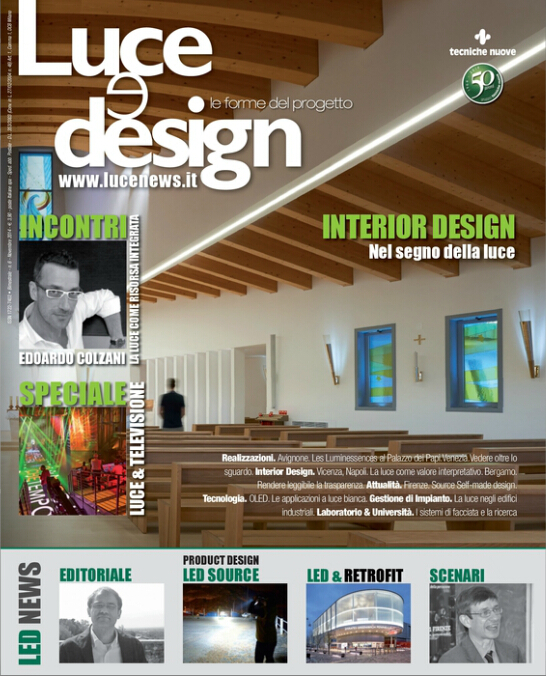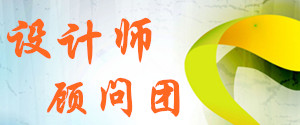文:玛利亚·宅诺尼
by Maria Genoni
我们对 HABITs 工作室的创立者迪高•罗斯和伊诺成佐•里菲诺进行了访采访:从这两位年轻设计师的网页里,大家可以直接了解到他们的创作特点和灵感,他们通过对作品的设计和图象对自己做出了阐述。
A meeting with two young and talented designers Diego Rossi, the founder of HABITs Studio, and Innocenzo Rifino, and the visit to their studio gave an insight into their unique approach, creative genius and their emphasis on the final products. Their bold designs and images bring their products to life.
图 1:设计师迪高·罗斯在 HABITs 工作室(照片提供:保罗·拜尔纳尔蒂)
Picture 1: HABITs Studio. Designer Diego Rossi (Photo courtesy: Paolo Bernardi)
意大利设计师迪高·罗斯从2001年开始同 LucePlan 合作,一同进行新方案的开发,他的作品在2004年被金指南选集(Selezione compasso d’oro)收录,在2003,2006和2008年分别获得三个设计奖,他本人也在2006年成为 LucePlan 技术照明新路线基本理论的奠基人之一。
他于2005年在米兰创立 HABITS 工作室,致力于产品(在照明,装修和家庭领域),包装和企业形象设计。为 LucePlan,Bugatti,Bugatti Pinetti,Comelit,Swarovsky, Panasonic, Hilti, Generali, Alitalia 以及其他的国际品牌进行设计。
最新的设计分别被展示在米兰三年展览中心(la Triennale di Milano),北京今日美术馆,马德里意大利文化处(l’Istituto Italiano di Cultura a Madrid)。同时他还任教于米兰理工大学工业设计系(Disegno industriale al Politecnico di Milano)和米兰新美术学院(Nuova Accademia di Belle Arti Milano)。
罗斯在米兰的工作室里接待了我们,借此我们请求展示他的设计方案,希望从中了解设计作品是否有捷径,又应如何平衡在作品设计和实际空间之间的差别。
图 2a,b:Agave 吊灯,使用拱形透明有机玻璃结构(2003,迪高·罗斯和拉法艾莱·代戴斯科)为 Luceplan 设计(图片提供:HABITs工作室)
Picture 2a,b: The Agave suspension light, with transparent methacrylate ribs (2003, Diego Rossi and Raffaele Tedesco) for Luceplan (Photo courtesy: HABITs Studio)
“我们并不追求一种设计作品的方法,也没有想要创造这样的方法。可以说,我们一直通过同样的模式来理解设计项目,不管是设计实际的空间或是产品,我们最感兴趣的是可以有不同的。我的很多作品都是灯具设计,因为我感兴趣的是其中的高科技因素,这是我在装饰品设计领域没有找到的元素。灯具的不断的发展给创意工作提供了更大的空间。随便举个例子,如果要设计一个椅子,我想到的第一件事情就是还需要再设计一个椅子么?对于照明世界来说,要经常考虑到新的应用,工艺的发展给发明新的产品提供了可能。另一方面,使人感兴趣的是在灯光设计的同时也设计周围的空间,因此设计方案中也融入了人与空间互动的成分。”
设计:在模式化与好奇心之间
所以你是因为对创新技术感兴趣才对灯有兴趣的了?当我们观看 Habits 工作室的设计作品时,我们发现其中有一些反复强调的主题….
“是的,例如模式化,是给用户保留一部分空间使其也可以有创造性行为。比如我们为 Agave (Luceplan) 进行设计时,就已经考虑到了给使用者保留一个可以使其参与进来的渠道。这方法对 LucePlan 和 Honeycomb 的部件同样适用,我们更重视的是创造结构而不是设备。为了商业运作的简便性,使用者就可以根据工业惯例,给每个设备设定一个编号。另一件我们感兴趣的事是创做一些不仅是外观很好,同时还有独特的内涵的产品。这样的产品能给人们带来惊喜,让他们看后不禁会心微笑。我们曾经给一家公司进行设计,用现代科技的U盘来开启和锁上传统日记本,这个配合让人一点也想不到U盘的用途。新设计的创意让我们都觉得很乐趣。把那些数字记录和纸质记录结合起来,可以同时使用它们。同样,Supergiù (Luceplan) 的设计也是这样的。产品从外表上看不出什么,但是通过它可以改变灯光的效果,创造出一个小惊奇,就好像小丑 Jack 从盒子中跳出来。”
图 3:HABITs工作室设计师伊诺成佐·里菲诺(图片提供:HABITs工作室)
Picture 3: Designer Innocenzo Rifino of HABITs Studio (Photo courtesy: HABITs Studio)
是否有一个你们特别爱用光源?
“我们从未有过任何偏爱,但是现在大部分的新设计都使用LED。尽管它在市场上已经有相当一段时间了,我们是特意晚点才开始使用它的。刚一开始的发展的实在太匆忙了,产品特点还没有完全显示就马上变得过时了。如今产品的品质有了一定保证,灯光的质量在家庭环境中也可以得以保证。现在LED产品寿命是以前的很多倍。”
产品是用来引发情感的
作品的创意从何而来?来自于你们的一个建议,来自于公司,还是来自于一个新工艺?
“每次都可能不同。如 Agave 和 Supergiù 的设备都来自于我们的一个概念,其他的如 Elementi,是公司给了我们战略性指示。Honeycomb 是来自于一个关于暗光的研究。”
客户对于最终的成果来说有多大的影响力?
“客户;可以说他们是整个过程中非常重要的一部分。他们的高瞻远瞩可以在设计时帮助我们做决定。大公司更倾向于降低风险,而小一点的公司更能通过稳定和紧密的运作保证最终成果的质量。”
当设计一个作品时你是否能够考虑到它的应用,它的使用背景环境?哪一类灯是你喜欢设计的?
“当设计一个作品时通常要考虑它的真实应用或者安装,可是人的想象力总是超前于我们的考虑。有时会发现一个产品被应用在从没有被人考虑过的环境中。如果我们设想空间中有一个作品,我们通过设计高度灵活可变的产品,力求给使用者最大程度的自由。这就与设计中考虑人的因素不同。人们是通过情感或者直觉挑选作品的。有些人会觉得照明效果比较重要,而另一些人认为灯具的设计更重要。”
在设计时,设计师对美的看法是必然会出现的。这可以从物品的外形或发散的灯光的看出来。从外形和灯光角度来看,你觉得什么是美?
“我很久都没有遵循过设计原则了。但是我相信内在的连贯性。如果一个作品整体上是连贯的,就会光芒四射。万事皆有价值和存在的理由。一个产品设计的本质就要使人兴奋,激发人们的情感。关于灯光我们想要再造自然光,就好像在家里窗户中弥散过来的自然光来点亮一个空间。”
图 4:Supergiù 是一种给 Luceplan 旗下 Elementi 品牌使用的设备(2005,迪高·罗斯和拉法艾莱 ·代戴斯科)(图片提供:HABITs工作室)
Picture 4: Supergiùa, a device designed for Luceplan’s Elementi range (2005, Diego Rossi and Raffaele Tedesco) (Photo courtesy: HABITs Studio)
是否存在您特别喜爱的作品?
“我特别喜爱的作品之一是最近刚设计出来的一款灯,叫做 Mini Mini(Luceplan, Elementi),仅仅是一个带线的小管子,我喜欢它是因为制作的特别简单。灯和电线之间的衔接经常被看成是连接灯泡的纽带,而在这个作品上成为了灯具的一部分。”
HABITs 工作室由两名建筑师创立:迪高·罗斯和伊诺成佐·里菲诺。在工作室内部是否存在任务划分,还是共同进行所有设计?是否在同一设计上产生过不同创意?
“我们一起进行所有设计,采用一种非常有效率的方式,那就是20秒的头脑风暴。一个人说方法另一个人给出它理由,到目前为止是没有更佳的方式。这样我们就能找到另一个人的想法的美,而不是试图改变它,其结果往往令人惊喜。这样一个良性循环就建立了。我们从大学时就认识,我们两个都对大家的方式方法有信心,这样使设计更加自由和有趣,因为不存在单一的责任,也就不存在一个中庸的设计,因为必须要使两人都满意,如果我们都坚持己见,那我们就换另外一种思路。
美和天赋是在他们的作品上清楚地体现出来的。当我们进入到工作室时,建筑师罗斯简单向我们描绘了他既美好又愉快的工作,主要强调了作品的质量。作品都是在一个讲述的故事,每个故事都有着很多的结尾,留给我们去自由地想象。正如设计师所希望的,我们成为创作过程的一部分。”
图 5:一直坚持 Luceplan 旗下 Elementi 品牌的路线,包括铝制吊灯 Mini Mini(2009)在内(图片提供:HABITs工作室)
Picture 5: The aluminium Mini Mini suspension light also in the Elementi range for Luceplan (2009) (Photo courtesy: HABITs Studio)
Since 2001, Diego Rossi has been developing new designs together with LucePlan. This collaboration was awarded a Selezione Compasso d’Oro in 2004 and three “Design Plus” prizes in 2002, 2006 and 2008. In 2006, Rossi became the co-founder of Elementi, LucePlan’s new line of technical lighting.
In 2005, he founded the HABITs studio in Milan, managing product design (for lighting, products and domestic appliances), packaging design and corporate identity. He deigns for LucePlan, Bugatti, Orizzonti, Pinetti, Comelit, Swarovsky, Panasonic, Hilti, Generali, Alitalia and other world famous corporations.
The Triennale di Milano, the Today Art Museum in Beijing and the l’Istituto Italiano di Cultura in Madrid have exhibited his most recent designs. He also teaches at the Industrial Design department of the Polytechnic Institute of Milan and the Nuova Accademia di Belle Arti in Milan.
In their studio at Milan’s Via Moneta, the first question that was asked relating to how he approaches designs; attempting to understand if he draws on a methodology in coming up with product design, and whether there is a difference between the design of a product and the design of a space.
“We do not have a methodology nor are we trying to create one. Nevertheless, we always approach a design with the same model. There are always some aspects that interest us more than others and that, regardless of whether we are working with a space or a product, excite us. My work focuses mainly on lighting design because I am interested in the high level of technology involved, which does not seem to be the case in the furniture sector. Lighting allows for innovation as it is constantly evolving. For example, when I consider a chair, my first thought is: is it worth designing yet another one? The world of lighting sources on the other hand constantly demands new modes of use to be developed. Technology offers the possibility to invent products for the future. I’m inspired by the fact that in lighting design, you also design the surrounding space and, as such, am designing the way in which people interact with that space.”
Design: between modularity & curiosity
Your interest in lighting is because of technology? The products that are designed by HABITs seem to have a recurring themes…
“Indeed! Modularity, for example, which allows the user to be creative as well. When we designed Agave (Luceplan), we gave it transparent ribs to allow the user to experiment and reconfigure the light. The same can be said for Elementi by LucePlan and Honeycomb; we create structures rather than devices. For commercial reasons, it was decided to assign each device a code. We’re also interested in creating products with built-in intelligence: a product is defined not just by its appearance but also by the special touches that make it unique. Such features may produce an element of surprise or bring a smile to your face. We designed a diary which can be locked by a USB key. The product brings the digital and non-digital world together and uses them contextually; however its appearance does not give anything away. We are amused by such novelty. Similarly, Supergiù by Luceplan is intentionally nondescript, its shape does not uncover its secret, but its lighting effect can be modified to reveal the unexpected, like a jack-in-the-box.”
Is there a lighting source that you prefer to use?
“We have never discriminated against any lighting source, however today the majority of new designs using LEDs. We deliberately started using them quite late in relation to how long they’ve been on the market. At the beginning, they were developed too hastily: products quickly became obsolete. Now we can count on high-performance LED and, even at home, the quality of the lighting can be adapted. These days an LED product can have a very long life span.”
The product is designed to provoke emotion
How the idea for a product is formed: is it the result of one of your proposals, the client or new technology?
“Each case is different. Agave and Supergiù were come up by us, whereas for other designs, such as the Elementi range, the client gave us a specific topic. The Honeycomb model was born out of research on dark light.”
What influence does the client have on the final result?
“Client is an integral part of the design and deserves an equal share of the praise; their foresight and determination help us to make decisions. For larger companies, their approach tends to avoid taking risks, whereas for smaller establishments the work relationship is very close and most likely that the product is of high quality.”
When you design a product do you also imagine how it will be used and where it will be installed? What kind of lighting do you like to design?
“When design a product we always try to imagine how it will be used or installed, but other people’s imaginations often go way beyond the realms of our own. Occasionally we discover that the product has been used in a setting we could not have imagined. When we imagine a product, we try to allow the user to have the greatest degree of freedom by making it as adaptable as possible. Designing with an individual in mind is quite a different matter, people use their emotion to choose a product. For one person the lighting effect might be important, but for others it’s the design of the product that counts.”
When designing, it is impossible to step away from one’s own idea of beauty, which may be found in the shape of an object or the light it emits. From the point of view of form and light, what is your idea of beauty?
“I have not stuck to the rules for a long time now, however I believe in coherence. If a product is coherent in its entirety, it will ultimately shine through. Everything should have value and exists for a reason. At its core, a product is designed to arouse emotion. When it comes to lighting, we aspire to recreate natural lighting, which appears to shine in through the window and light up a space.”
Is there a product that you especially like?
“One of the products that I am particularly fond of is a recently designed lamp called Mini Mini (Luceplan, Elementi), which is just a simple tube and a wire. I like it because it is so simple. There is interplay between lamp and flex, which is often just considered a connection to the light but in this case becomes an integral part. ”
The HABITs studio was founded by Diego Rossi and Innocenzo Rifino, both architects, how do you two share out the work between you or do you work together on all the designs? Do you have opposing ideas for the same design?
“We are both involved in every design and find that twenty second brainstorming sessions work well for us! One of us suggests an idea and the other agrees and, for now, it seems to work. It’s about being able to find beauty in someone else’s idea without attempting to change it and, as such, the results are always surprising: a “virtuous” circle is created. We go back a long way to university, and we both trust in each other’s approach. This makes the designs more interesting because we are both involved in the process. We do not create mediocre designs to please us both, if we really cannot agree on something we change direction.
Beauty and genius are evident in their projects. Rossi talks about his work and these qualities are immediately apparent the moment we enter the studio. The products tell their own story, a story with more than one ending. The designers allow our imaginations to run wild, as we become part of the creative process. ”








